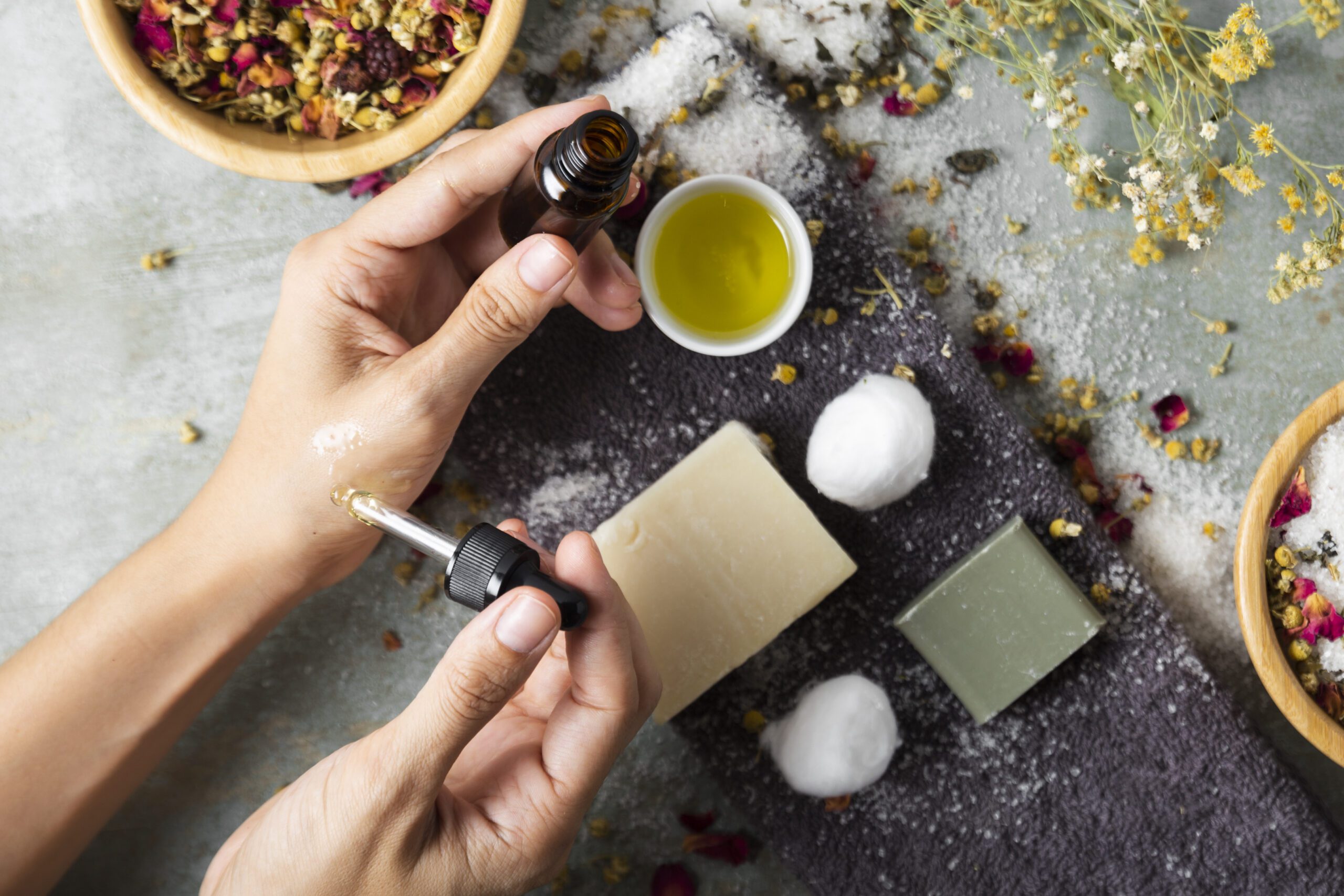
How to Start a Handmade Cosmetics and Skincare Products Business
You’ve got a passion for creating beautiful skincare and cosmetics products, and you’re ready to turn your hobby into a thriving business. But where do you start? How do you bring your handmade products to the world and build a successful venture? In this guide, we’ll explore the exciting journey of starting a handmade cosmetics and skincare products business. Let’s dive in and uncover the secrets of success.
Discovering Your Passion
What fuels your creativity?
Starting a handmade cosmetics business begins with a deep passion for crafting. You must love what you do. It’s this passion that will set your products apart and make your business a success. Do you have a particular interest in organic skincare, luxurious bath products, or vibrant makeup? Identify your niche and what you love to create.
Market Research: Know Your Niche
What’s your niche, and who are your competitors?
Understanding your niche and target market is crucial. Research your competitors and identify gaps in the market. Are there specific ingredients or types of products that are in demand but not readily available? This is your opportunity to cater to those needs.
Business Plan: The Blueprint of Success
In the world of entrepreneurship, your business plan is your north star, your guiding light, and your blueprint for success. It’s not merely a document but a dynamic roadmap that outlines your business’s goals, strategies, and financial projections. Whether you’re starting a handmade cosmetics and skincare products business or any other venture, your business plan is your foundation.
Why Do You Need a Business Plan?
- Clarity and Vision: Crafting a business plan forces you to clarify your vision. It’s a bit like drawing a treasure map with ‘X’ marking the spot where your dreams lie. This clarity helps you stay focused and work purposefully towards your goals.
- Goal Setting: Your plan sets specific, measurable, achievable, relevant, and time-bound (SMART) goals. This makes it easier to track your progress and adjust your strategies when necessary.
- Attracting Investors: If you plan to seek funding from investors, they’ll want to see a well-thought-out business plan. It demonstrates your commitment and seriousness, making them more likely to invest in your venture.
- Guiding Your Decisions: Your business plan serves as a decision-making tool. When faced with critical choices, you can turn to your plan to see if a particular course of action aligns with your long-term objectives.
- Risk Mitigation: It’s a space to assess potential risks and outline strategies to mitigate them. By considering challenges in advance, you’ll be better prepared to handle unexpected obstacles.
What Should Your Business Plan Include?
- Executive Summary: This is a concise overview of your business. It should grab the reader’s attention and provide a glimpse of what’s to come.
- Company Description: Describe your business, its mission, vision, and the problem it solves. What makes it unique?
- Market Analysis: This section dives deep into your industry and target market. Who are your competitors, and what trends are shaping your niche?
- Products and Services: Detail what you offer, including the benefits and features of your products. How do they meet your customers’ needs?
- Marketing and Sales Strategies: Outline how you plan to attract and retain customers. What channels will you use, and what’s your unique selling proposition (USP)?
- Organizational Structure: Who are the key players in your business? This includes your team’s roles and responsibilities.
- Funding Requirements: If you need capital, specify how much you require and how you plan to use it.
- Financial Projections: Present realistic financial forecasts, including income statements, balance sheets, and cash flow statements. This demonstrates your understanding of the financial aspects of your business.
- Operational Plan: Detail the day-to-day operations of your business. How will you produce your cosmetics and skincare products? What’s your supply chain like?
- SWOT Analysis: Identify your business’s strengths, weaknesses, opportunities, and threats. This helps you leverage your strengths and address potential challenges.
Crafting Your Business Plan
- Research and Data: Your business plan should be well-researched and data-driven. This means studying your industry, competitors, and target market thoroughly.
- Realistic Projections: While optimism is essential, your financial projections should be grounded in reality. Unrealistic figures can harm your credibility.
- Concise Language: Keep the language straightforward and avoid jargon. You want anyone to be able to pick up your plan and understand it.
- Flexibility: Your business plan is not set in stone. It should be a dynamic document that evolves with your business. As you learn, grow, and adapt, your plan should reflect those changes.
- Professional Help: If you’re not confident in your ability to create a business plan, don’t hesitate to seek professional assistance. Consultants or business plan software can be valuable resources.
- Review and Revise: Regularly revisit your business plan. As your business grows, you’ll gain new insights. Make sure your plan stays current and aligned with your goals.
Legal Considerations: Compliance Matters
Starting a handmade cosmetics and skincare products business is an exciting venture, but it’s not all about crafting delightful potions and lotions. Legal considerations and compliance matter significantly, ensuring that your products are not only beautiful but safe for your customers. In this section, we’ll delve into the essential legal aspects you need to consider.
Understanding the FDA Regulations
The U.S. Food and Drug Administration (FDA) plays a crucial role in regulating cosmetics. Although cosmetics are not subject to the same strict regulations as pharmaceuticals, the FDA still oversees their safety. Compliance with these regulations is paramount for your business’s success.
- Labeling Requirements: Your product labels must adhere to specific guidelines. This includes a clear and accurate product description, ingredients list (in descending order of predominance), and warnings when necessary.
- Ingredient Safety: Ensure the ingredients you use are safe and conform to FDA regulations. Stay informed about prohibited and restricted ingredients to avoid using substances that could harm your customers.
- Good Manufacturing Practices (GMP): Following GMP is essential to maintain the quality and safety of your products. This involves establishing and following quality control procedures for every aspect of production.
- Cosmetic Testing: While cosmetics aren’t subject to pre-market approval by the FDA, you’re responsible for ensuring that your products are safe for use. This includes conducting safety assessments, patch testing, and microbial testing as needed.
Compliance Beyond the FDA
Compliance doesn’t stop at the FDA. You may need to consider other regulations depending on your location and target market. For example:
- International Regulations: If you plan to sell your products internationally, you must navigate the regulations of the countries you’re targeting. Each country may have its own set of rules and requirements.
- Product Liability Insurance: Protecting your business from potential legal issues is essential. Product liability insurance can safeguard you in case a customer experiences adverse reactions to your products.
- Business Structure: The legal structure of your business (e.g., sole proprietorship, LLC, corporation) affects your liability and tax obligations. Consult with a legal expert to determine the most suitable structure for your business.
- Environmental Regulations: If you’re using natural ingredients, you might need to comply with environmental regulations related to sourcing, sustainability, and waste disposal.
- Trademark and Intellectual Property: Protect your brand by trademarking your business name and logos. This prevents others from using your brand identity without permission.
- Local Regulations: Depending on your location, you might be subject to city or state regulations, such as health and safety inspections or zoning restrictions.
Seek Legal Guidance
Navigating the complex landscape of legal considerations can be challenging, especially if you’re not well-versed in the legal aspects of cosmetics and skincare products. To ensure your compliance matters are in order, consider seeking legal counsel. An attorney with experience in the cosmetics industry can provide invaluable guidance on regulatory compliance, intellectual property protection, and business structure.
Sourcing Quality Ingredients
The quality of the ingredients you use in your handmade cosmetics and skincare products is the cornerstone of your business. Crafting products that make your customers look and feel great starts with sourcing the finest and safest components. In this section, we’ll explore the significance of sourcing quality ingredients and how to do it effectively.
The Significance of Quality Ingredients
- Product Quality: The ingredients you choose directly impact the quality of your cosmetics. Top-notch ingredients result in products that are effective, safe, and luxurious.
- Customer Satisfaction: When customers use your products, they expect a certain level of quality. High-quality ingredients contribute to a positive customer experience, which can lead to repeat business and glowing reviews.
- Safety: Ensuring that the ingredients are safe for your customers is non-negotiable. Quality ingredients are more likely to be free from harmful contaminants or allergens.
- Brand Reputation: Your brand’s reputation is closely tied to the quality of your ingredients. Using subpar components can damage your reputation and make it challenging to gain trust in the market.
Tips for Effective Ingredient Sourcing
- Research Suppliers: Conduct thorough research to find reputable suppliers who provide quality ingredients. Look for suppliers who adhere to safety and ethical standards. Consider factors like sustainability and fair trade practices, depending on your brand values.
- Ingredient Transparency: Suppliers should be transparent about the source and quality of their ingredients. They should provide detailed information about the purity and safety of their products.
- Testing and Certification: Seek ingredients that have undergone third-party testing for quality and safety. Many suppliers provide certification that their products meet certain standards.
- Bulk Purchasing: Purchasing ingredients in bulk can often save you money and ensure consistency in your products. However, only buy in larger quantities if you have proper storage facilities.
- Consistency: To maintain product consistency, establish long-term relationships with reliable suppliers. Consistency is key to building customer trust.
- Natural and Organic Ingredients: If your brand focuses on natural or organic products, verify that your suppliers adhere to these standards. Look for certifications such as USDA Organic or EcoCert.
- Fragrance and Essential Oils: Be cautious when sourcing fragrance and essential oils. Not all suppliers provide oils that are safe for cosmetic use. Ensure they are free from harmful additives and are skin-safe.
- Allergen Awareness: Be mindful of allergens. Clearly label products with common allergens (e.g., nuts or certain essential oils) to protect customers with sensitivities.
The Role of Ingredient Testing
Ensuring the safety of your ingredients is vital. Testing can help confirm the quality and safety of the components you use. This can include:
- Stability Testing: Assess how ingredients react with each other and the environment over time. This is crucial to maintaining product consistency.
- Preservative Testing: Confirm that your chosen preservatives effectively protect your products from microbial contamination.
- Microbiological Testing: Ensure that your products meet microbiological standards, minimizing the risk of bacterial contamination.
- Patch Testing: Before releasing a new product, consider conducting patch tests on willing participants to identify any potential allergic reactions.
Sustainable Sourcing
In today’s environmentally conscious world, sustainable sourcing is becoming increasingly important. Consider sourcing ingredients that are ethically and sustainably produced. Look for suppliers who support fair trade practices and have environmentally friendly sourcing and manufacturing processes.
Creating Unique Formulas
In the world of handmade cosmetics and skincare products, creativity and innovation are your greatest assets. To stand out in a market filled with various offerings, you need to create unique and exceptional formulas that capture the attention of your target audience. Let’s delve into the art and science of crafting one-of-a-kind product formulas.
The Quest for Uniqueness
Creating a unique formula isn’t merely about being different for the sake of it. It’s about addressing specific needs, standing out in the crowd, and delivering superior results. Here’s how to embark on the quest for uniqueness:
- Market Research: Understand your target market’s needs and desires. What gaps exist in the current product offerings? What problems can your products solve that others can’t?
- Ingredient Selection: Your choice of ingredients is the foundation of your formula. Look for exotic, niche, or locally-sourced components that set your products apart. Consider both active and base ingredients.
- Texture and Consistency: The feel and texture of your products matter. Experiment with various textures – creamy, gel-like, or balm-like – and see which suits your product’s purpose and your brand.
- Scent: Fragrance plays a vital role in cosmetics. Unique and appealing scents can be a significant selling point for your products. Invest in creating signature fragrances that resonate with your brand.
- Color: If your products have color, like makeup, explore distinctive shades that are not commonly found in the market. Consider the undertones and how they complement various skin tones.
The Role of Innovation
Innovation is at the heart of creating unique formulas. It’s about pushing boundaries, experimenting, and being open to new ideas. Here’s how to infuse innovation into your product development:
- Experimentation: Don’t be afraid to experiment with different combinations of ingredients. Sometimes, unexpected pairings lead to remarkable results.
- Customization: Consider offering customizable options, allowing customers to tailor products to their specific needs. This could include choosing fragrances, colors, or active ingredients.
- Beneficial Additions: Look into emerging skincare trends and ingredients. Integrating sought-after components like hyaluronic acid, peptides, or adaptogens can make your products appealing.
- Sustainability: Innovate with eco-friendly and sustainable ingredients. Conscious consumers are increasingly looking for products that align with their values.
- Combination Products: Think about creating unique multi-purpose products. For example, a product that can be both a foundation and sunscreen can stand out in a crowded market.






